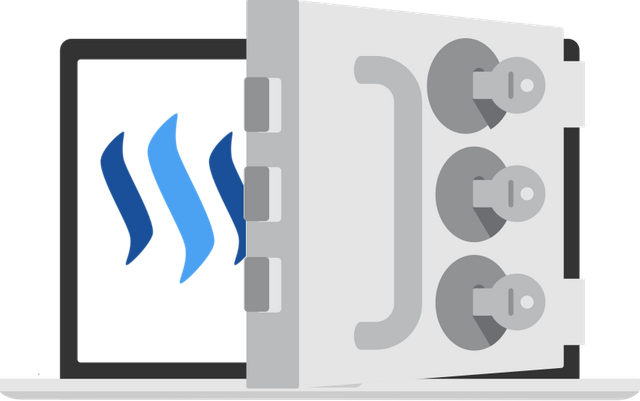Steemit: The Next Billionaire Social Media Platform? Here's How to Position for Life-Changing Gains...

On February 4, 2004, while working from a nondescript dorm room in Harvard University, a baby-faced teenager changed the world. In a few short years, the social media leaders of the day—MySpace and Friendster—were all crushed under the heel of what was originally called “The Facebook.”!
Twelve years later, Facebook is now worth over $355 billion. Today, Mark Zuckerberg, Facebook’s CEO and founder, is one of America’s richest men with a net worth of $55 billion.
And now, the same disruptive forces that propelled him to the top of America’s wealthiest citizens are conspiring against him to completely remake the inner workings of social networks.
In a moment, I’ll share with you this incoming threat to Facebook’s supremacy. But first, I need to explain just how the current social media model works and why it’s about to be totally disrupted.
Anatomy of a Social Network
People spend hours each day adding to their Facebook “feeds” (like announcement boards)… feverishly hoping to amass “likes” from their friends, family, and even strangers. This has turned Facebook’s users into unpaid and unwitting content creators.
What’s smart about Facebook is the company matches “contextual” ads to the content created by users. So, if someone is sharing a post about a new sofa he or she bought, Facebook will place home furnishing ads next to the post.
What is brilliant about Zuckerberg is that by putting a thumbs up “like” button next to each post, he harnessed the human need to connect and be “liked” in a way no one before him had done.
Zuckerberg transformed this deep human need for approval into a company that has the fifth-largest market capitalization in the world.
All social networks now follow Zuckerberg’s model.
Twitter, Snapchat, Instagram, YouTube, and Reddit extract tens of billions of dollars in revenue from its users’ content. With the exception of YouTube, none of that money ever trickles back down to the users of the system.
All of the economic value is sucked up by the network and redistributed to shareholders of the various network providers. Since the early 2000s, this has been the model. It’s been a brilliant piece of social engineering. The platform providers get the physical monetary value from the content… and the creators get an emotional token (the “like”) in return.
So far, this system has worked exceedingly well… for the platform providers. But this is changing.
“Likes” Are No Longer Enough

The users of the social networks of tomorrow will demand something more. They will want payment in the form of actual money.
It’s already happening: Entrepreneurial sorts are discovering new ways every day to hijack Facebook’s algorithm and make it work for them. Some are becoming “internet superstars.” They win ad dollars. Others are peddling products for sale, hoping to catch eyeballs.
Up until this year, no company has been sufficiently incentivized to improve the current system on behalf of the user. Just like the social networks in 2004 that were fat and happy. They felt they had the market sewn up… And they did, until Facebook came along and ate their lunch.
Now, like then, the entrenched players have become complacent. They are taking their users for granted. They are supremely confident that no one can knock them from their deeply entrenched positions. And I can understand why they might believe that.
After all, building networks as robust as Facebook’s takes tens of millions of development dollars. Programmers have to be paid, servers must be bought, and moderators have to watch the whole system.
At first glance, the sheer cost involved in creating a competing social network would seem like an insurmountable moat.
And it has been… until the emergence of the blockchain.
Here’s How the Blockchain Is Disrupting Social Networks
Whenever you don’t have to invest hundreds of millions in computing power, you can scale your operation very quickly.
The blockchain is helping companies do just that.
With the emergence of blockchain technology, new companies have figured out how to use this cost advantage (among other things, which I’ll explain in a moment) to rise up quickly and displace Facebook, Snapchat, Instagram, Reddit, YouTube, and other dominant players.
Here’s how they’re doing it…
First, the economic cost of hosting and keeping secure a competing network can easily be handled through the mining reward made available to blockchain miners.
For example, on the bitcoin blockchain, miners compete for 12.5 bitcoins that become available every 10 minutes. Whoever solves a complex mathematical problem first gets the prize. At current prices, that’s a $37,487 prize every 10 minutes.
The investment the miners make in computer hardware going after the prize is what maintains the network. On the Ethereum network, miners receive five ether (or about $1,700) for solving its mathematical problems.
But on the Ethereum network, blocks are produced every 15 seconds. So, the mining reward provides an economic incentive for miners to invest in the backbone of new networks.
Second, they’re attracting new users by providing a platform that will pay them for their work. So instead of receiving “likes,” the people who create and curate the content all share in the profits of the network.
When all participants have a stake in the success of the network, the profit motive is successfully harnessed to get all users working in the long-term best interest of the network.
This is no utopian vision cooked up in an academic ivory tower. This is happening right now on a blockchain-powered social network called Steemit.
Miners provide the computing power running the network. They compete for the mining reward for the successful completion of new blocks.
Almost 200,000 registered users are creating, curating, and self-managing the Steemit network. Steemit hit the 100,000 registered users mark in under five months. And it’s holding its own against the current top social media sites.
According to Alexa, Amazon’s web analytics division, Steemit gets more daily page views per visitor than Facebook, Twitter, and Reddit.
Friends, that is remarkable because Steemit isn’t even one year old yet. Think about that. In less than one year, the network has better page view metrics than every entrenched social media player in the space. That’s amazing.
What Is Steemit?

Steemit is a social network in which users create and comment on each other’s content. Steemit is made of subgroups that encompass literally thousands of topics.
Content creators write articles, how-tos, and opinion pieces on myriad topics. Users vote on the value of the content by “upvoting” good content and “downvoting” bad content.
This constant content curation leads to excellent articles becoming quickly recognized. That recognition pushes the content up the ranks on search engines like Google, which draws more users to the Steemit platform.
This creates a so-called “virtuous cycle” that seeks to make Steemit a global trusted source of excellent content.
How Does It Work?
Content creators receive monetary rewards for their work when it is “liked.” (Steemit uses the term upvoted.) These rewards vary. They depend on the amount of likes and the quality of the reputation of the people liking the content.
If someone has a high reputation score (all users start out with a reputation score of 25 and it tops out at 100), his or her upvote is much more valuable than an upvote from someone with a lower reputation score.
Content creation rewards come in two forms: 50% of the rewards are in the form of a token called Steem Dollars and 50% is in a token called Steem Power.
I want to warn you that the next section took me a long time to figure out. Here is the short version: There are three tokens that are used on the Steemit network. The one that we want to own is Steem Power.
Below, I will explain the difference between the three tokens. Again, if it’s confusing at first, don’t sweat it. I had to interview both founders before I fully understood how each of the three tokens work.
Steem (STEEM):
Steem is the base currency of the Steemit network.
Think of it like an inflationary fiat currency. The amount of Steem doubles each year. (We recently interviewed the founders of Steem, and they told us this might be changing to just 10% inflation per year. But for now, inflation runs at 100%.)
The inflationary nature of Steem means we don’t want to invest in it.
Steem Dollars (SBD):
Steem Dollars are digital tokens pegged to the U.S. dollar. The founders of Steem wanted to pay content providers using a token that didn’t have wild value swings.
The exact method of how they peg Steem Dollars to the dollar is beyond the scope of this issue.
However, if you are technically inclined, then I would recommend you read the Steemit whitepaper to learn exactly how this is accomplished.
Holders of Steem Dollars receive an “interest rate” equivalent to 10%. That means 10% of all newly created Steem goes to the holders of Steem Dollars.
So, for example, if you owned 100 Steem Dollars on January 1, 2016… one year later, on January 1, 2017, you would own 110 Steem Dollars.
Theoretically, Steem Dollars should always trade at or near $1. Right now, they trade at 98 cents.
However, there are times when Steem Dollars trade far below or above $1. While this creates excellent opportunities for nimble traders, at this time, we’re not recommending Steem Dollars.
Steem Power (SP)
Steem Power gives you the equivalent of an ownership stake in the Steemit network. 90% of all new Steem created is given to holders of Steem Power.
For instance, if you own 100 Steem Power on June 12, 2017, you will have 190 Steem Power by June 12, 2018.
Steem Power holders receive the biggest rewards and have the most power on the Steemit network. The more Steem Power you have, the more weight your upvotes and downvotes carry.
Important Note: Steem Power is an illiquid investment. When you buy Steem Power, you can’t sell it for one year. This is being done to incentivize decisions that are in the network’s best long-term interest. When you do decide to sell Steem Power (even after two years), you can’t sell it all at once. The cash-out cycle pays you in 104 equal weekly payments.
For instance, say you have $100 in Steem Power, and in two years, it’s grown to $1,000, and you decide to cash out. Every week for 104 weeks, you will be able to cash in $9.60 of your Steem Power. ($9.60 times 104 = $1,000). I have no problem with that, and neither should you. I look at all our Asymmetric Bundle investments as long term in nature. I’m happy to leave the money in there while the Steemit network grows.
Who’s Behind Steemit?

In 2009, Dan Larimer discovered bitcoin when it was just pennies on the dollar. Seeing its potential, he instantly got involved.
Dan noticed that centralized exchanges were a weak point for bitcoin. So, he took his decade-plus experience as a software engineer and founded BitShares.
BitShares is a decentralized exchange built on the blockchain. It runs on a technology called Graphene, also developed by Dan and his team. Graphene is designed to handle more transactions than Visa and MasterCard combined.And it’s the same technology behind the Steemit platform.
It was through BitShares that Dan met Ned Scott. Ned, an early bitcoin adopter, started moonlighting for Dan in 2015, promoting the BitShares technology to different firms.
Both Dan and Ned wanted to do something bigger. They batted around ideas such as microinsurance and mutual aid. But the vision grew into something larger—Steemit—a place where individuals get rewarded by a community for posting and voting on content.
Since then, the idea has snowballed. Dan and Ned founded Steemit in January 2016. It launched in early April. And today, it has over 175,000 users.
But Steemit is more than a vibrant social media site. Dan and Ned see a future where entrepreneurs from different walks of life leverage and integrate Steemit as an open-source publishing platform.
So Steemit could not only become the future of social media, but of publishing as well.
Which One to Buy?
I strongly believe the crypto market is just getting started. We are still the early adopters, hence I am in it for the long haul. I recommend you load up of **Steem Power (SP). **
Steem Power gives you the maximum long-term potential reward. If Steemit ends up becoming the next Facebook, then early investors in Steem Power would become very rich.
I know that’s vague. I pride myself on talking with facts and numbers. But right now, I can’t. At this time, it’s impossible to place a future valuation on Steemit. It’s just too new. Like with Facebook in 2004, there is just no valuation model we can use yet to even guess at Steemit’s potential value.
Much like Facebook, we can only say that if Steemit can grow its user base into the millions, it will become very valuable.
At the time of this writing, the entire network is being valued at $500 million. We think it’s worth significantly more than that. I really want you to view this as a long-term investment of time and money. Like all crypto plays, Steemit is speculative, but high rewarding.
Conclusion

Betting on old winners wont work...
How do we make money from the blockchain revolution?
I can tell you: It won’t be by buying into Facebook, Amazon, Netflix, or Google. The leaders of today rarely make the leap to become the leaders of tomorrow.
Think about IBM in the 1980s. It was a natural fit to dominate the burgeoning field of personal computers. Yet it was a spunky startup out of Redmond, Washington, called Microsoft that ended up eating IBM’s lunch.
What about online shopping? Surely, in the 1990s, Wal-Mart should have dominated the shift to online shopping, right? But it didn’t. A small startup called Amazon.com crushed Wal-Mart online.
What about streaming video? If anybody should have had that market locked, it would have been Blockbuster, right? But by 2010, Netflix put it out of business.
The problem with entrenched players is that they are making so much money off the old model, they are loath to blow it up and embrace the new model. And that is why we must look at new companies if we want to grab a piece of the enormous upside ahead of us in the blockchain space.
Are you fully invested in Steemit?

Congratulations @concepcionguzman! You have completed some achievement on Steemit and have been rewarded with new badge(s) :
Click on any badge to view your own Board of Honnor on SteemitBoard.
For more information about SteemitBoard, click here
If you no longer want to receive notifications, reply to this comment with the word
STOPBy upvoting this notification, you can help all Steemit users. Learn how here!
now thats a great post. good work my friend. upvoted you and now following! in the break down steem is the place to be
Thanks for reading and upvoting! I appreciate it!